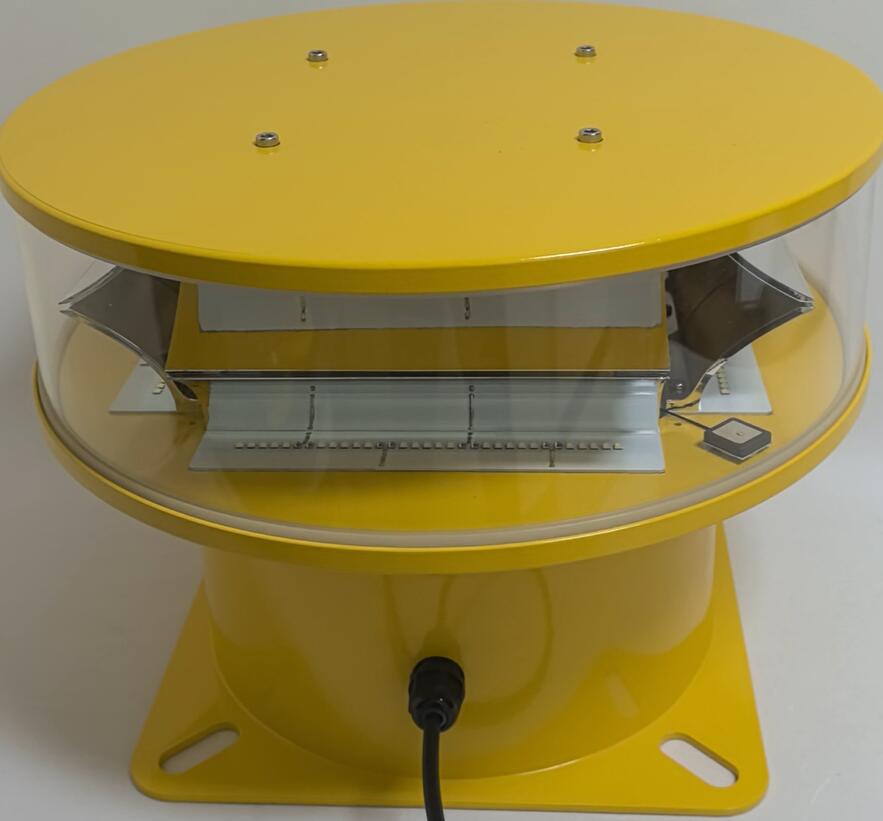Aeronautical Obstruction Light: Guiding the Way in the Sky's Maze
In the vast expanse of the sky, where aircrafts crisscross in their designated paths, there exists an unsung hero - the aeronautical obstruction light. These lights are the silent guardians that ensure the safety of every flight, preventing potential disasters that could occur due to collisions with man - made or natural obstacles.
Aeronautical obstruction lights are specifically engineered to make various obstructions visible to pilots from afar. These obstructions can range from tall communication towers, chimney stacks, and high - rise buildings in urban areas to wind turbines in open landscapes. With the increasing number of structures being built around the world and the expansion of air travel routes, the role of these lights has become more critical than ever.
The science behind these lights is fascinating. They are designed with specific optical characteristics to maximize their visibility under different weather conditions. For instance, during clear nights, the light should be bright enough to stand out against the background of stars. In foggy or rainy conditions, the light's intensity and color need to be such that it can penetrate the haze and still be visible to the pilots. High - intensity white lights are often used for extremely tall and prominent obstructions. These lights can emit a powerful beam that can be seen from a significant distance. The flashing pattern of these lights is also carefully calibrated. A regular flash interval helps pilots to quickly identify and distinguish the obstacle from other lights on the ground.
Red lights are commonly used for smaller or less - tall obstructions. The color red has a long wavelength, which makes it more visible in the atmosphere, especially during twilight or in hazy conditions. Some red obstruction lights have a steady - burn feature, while others may have a slow - flashing pattern. This variety in the operation of red lights is based on the height and location of the obstruction as well as the surrounding air traffic density.
There are also medium - intensity lights that serve an intermediate purpose. They are suitable for structures that are not as high as those requiring high - intensity lights but still pose a significant risk to aircraft. These lights often have a different color combination or flash sequence to differentiate them from other types of obstruction lights. This differentiation is crucial as pilots need to be able to quickly assess the height and nature of the obstacle based on the light characteristics.
The installation of aeronautical obstruction lights is not a haphazard process. It is governed by strict international and national aviation regulations. These regulations specify the minimum and maximum heights at which the lights should be installed on an obstruction, the number of lights required for a particular structure, and the specific type of lights based on the structure's height and location. For example, a tall building near an airport may require a more elaborate lighting system compared to a similar - sized building in a less - trafficked area.

Maintenance of these lights is equally important. Regular inspections are carried out to ensure that the lights are functioning properly. Any malfunctioning light can have serious consequences. A burned - out bulb or a faulty power supply can make an obstruction invisible to pilots, increasing the risk of an accident. Technicians responsible for maintaining these lights use specialized equipment to test the light's intensity, flash pattern, and visibility range. In some cases, backup power systems are also installed to ensure that the lights remain operational during power outages.
| aeronautical obstruction lights | RT54 |
In recent years, with the growth of renewable energy, wind farms have presented a new challenge in the realm of aeronautical obstruction lighting. Wind turbines are often located in areas with significant air traffic, and their large rotating blades can be difficult to detect. Specialized obstruction lights have been developed for wind turbines. These lights are designed to account for the movement of the blades and provide continuous visibility. They often have a unique flash pattern that indicates the presence of the rotating turbine to pilots.
Moreover, technological advancements have led to the development of more efficient and reliable aeronautical obstruction lights. LED technology has revolutionized the industry. LED - based obstruction lights consume less power, have a longer lifespan, and can provide better visibility compared to traditional incandescent lights. This not only reduces the maintenance cost but also improves the overall safety of the airspace.
In conclusion, aeronautical obstruction lights are an indispensable part of the aviation safety ecosystem. Their proper design, installation, and maintenance are essential for the smooth and safe operation of air travel. As we continue to build and expand our infrastructure on the ground and in the air, the significance of these lights will only grow, safeguarding the lives of those who take to the skies.
